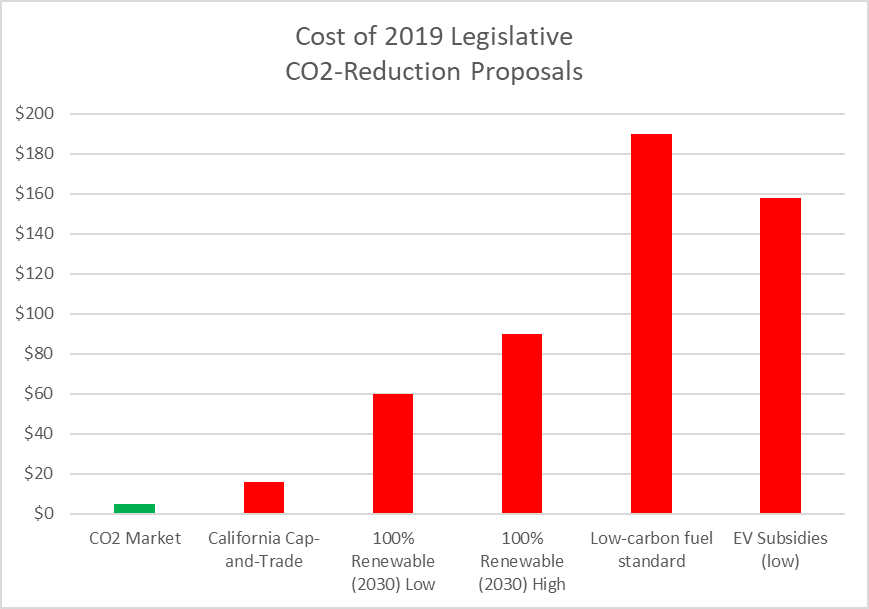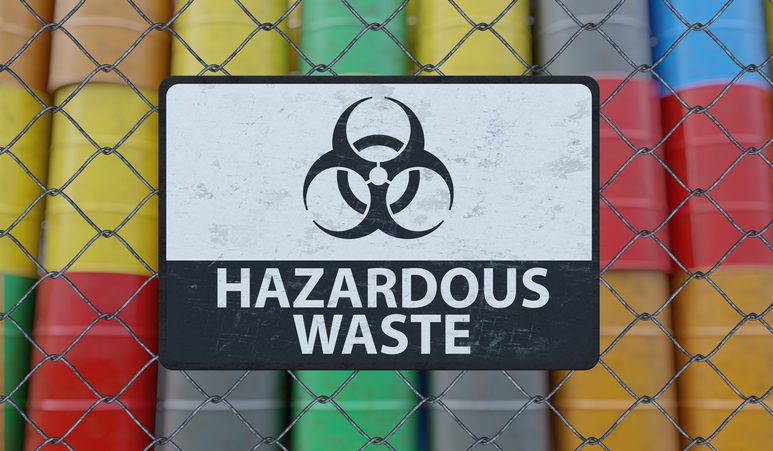As a result of the failure to find a compromise on carbon policy over the last six years, the legislature is now proposing a number of regulatory policies to reduce CO2 emissions. Based on the experience of other states, projections show these policies will be expensive and waste resources that could be used more effectively. Here is a quick look at the cost of three policies advocated by the governor and being considered by the legislature.
Phase out coal and natural gas by 2030
Senate Bill 5116 would phase out coal and natural gas by 2030, replacing it with carbon-free sources. According to analysis by the Low Carbon Prosperity Institute, it would cost between $60 and $90 to reduce each metric ton (MT) of CO2.
 The cost to achieve the proposal’s goal in 2045 to go to 100% renewable is much more expensive. Projecting the costs of policies more than a decade away, however, is risky and this assumes the legislation would not change as the cost of implementation became more tangible. Although the Low Carbon Prosperity Institute provided a cost estimate beyond 2030, I think those numbers are speculative. They do demonstrate one useful insight, however, noting that the cost to reach the 100 percent renewable goal is huge compared to reaching 99 percent renewable. Reaching the arbitrary 100 percent mark for political purposes is needlessly expensive.
The cost to achieve the proposal’s goal in 2045 to go to 100% renewable is much more expensive. Projecting the costs of policies more than a decade away, however, is risky and this assumes the legislation would not change as the cost of implementation became more tangible. Although the Low Carbon Prosperity Institute provided a cost estimate beyond 2030, I think those numbers are speculative. They do demonstrate one useful insight, however, noting that the cost to reach the 100 percent renewable goal is huge compared to reaching 99 percent renewable. Reaching the arbitrary 100 percent mark for political purposes is needlessly expensive.
Through 2030, SB 5116 would cost between 12 and 18 times as much to reduce CO2 as it costs on the market. For every ten dollars it costs electricity consumers, we only get 55 cents of CO2 reduction.
Additionally, the fiscal note for the legislation estimates a cost of $6 million to implement the bill in the first biennium. For that amount, Washington could invest in projects that could reduce CO2 emissions by the equivalent of 300,000 cars.
Low-carbon fuel standard
House Bill 1110 would institute a low-carbon fuel standard, like those in California and Oregon, to reduce the carbon-intensity of motor fuels. Oregon’s law is very new, but already prices have jumped to $150/MT CO2. In California, prices are even higher, reaching $190/MT CO2 in January.
A low-carbon fuel standard would cost between 30 and 38 times as much to reduce CO2 as it costs on the market. For every ten dollars it costs drivers, we only get 26 cents of CO2 reduction.
Additionally, the fiscal note for the legislation estimates a cost of $2.5 million to implement the bill in the first biennium. For that amount, Washington could invest in projects that could reduce CO2 emissions by the equivalent of 125,000 cars.
Electric Vehicles
Despite being included in the Governor’s legislative priorities, legislation to subsidize electric vehicles is stalled. Electric vehicles are purchased overwhelmingly by those living in the wealthiest zip codes by people who generally aren’t price sensitive. As a result, sales tax breaks do little to create new sales. Even with the extremely generous assumption that one-quarter of EV sales would not have occurred without a sales tax break, we estimate it costs about $158 to avoid one MT of CO2.
This policy costs about 31 times as much to reduce CO2 as it costs on the market. For every ten dollars it costs Washington taxpayers, we only get 32 cents of CO2 reduction.
Regulatory approaches to reducing CO2 have a very high cost and waste resources that could be used more effectively.






